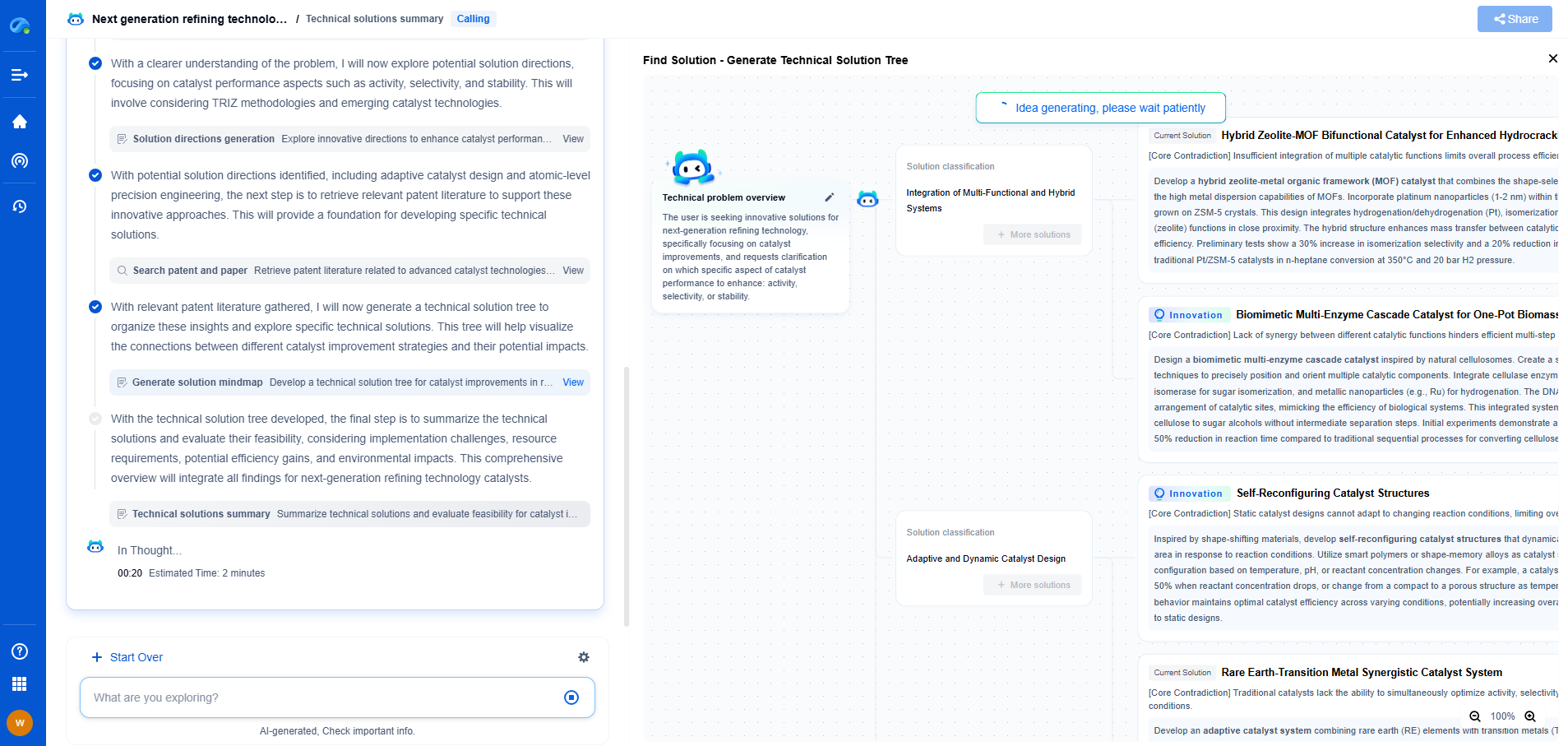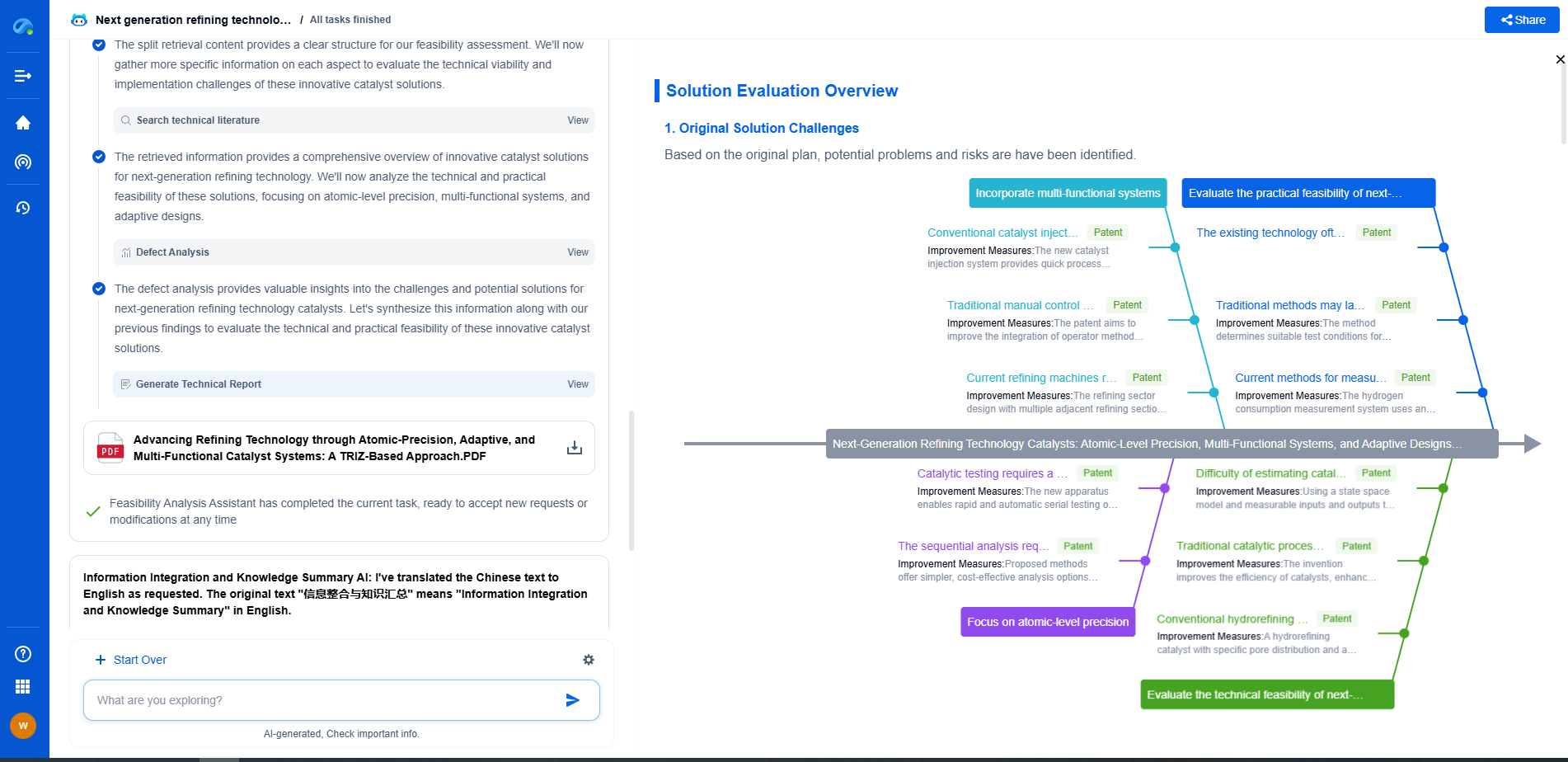What is Predictive Maintenance? AI-Driven Fault Detection in Machinery
JUL 2, 2025 |
Understanding Predictive Maintenance
Predictive maintenance is a proactive approach that involves monitoring the condition and performance of equipment during normal operation to reduce the likelihood of failures. Unlike traditional maintenance strategies, which are either reactive (fixing machines after they break) or preventive (servicing machines on a regular schedule regardless of their condition), predictive maintenance aims to anticipate and prevent equipment failures through data analysis and monitoring.
The core idea is to collect data from machines using sensors and other monitoring tools, analyze this data to detect patterns or anomalies, and predict when a machine is likely to fail. This allows organizations to perform maintenance activities just in time, extending the life of the equipment and reducing unplanned downtime.
AI-Driven Fault Detection: A New Era in Predictive Maintenance
Artificial Intelligence (AI) has significantly enhanced the capabilities of predictive maintenance. With AI, vast amounts of data generated by machines can be analyzed in real-time to detect anomalies and predict potential faults. This is achieved through machine learning algorithms that continuously learn from historical data and improve their accuracy over time.
AI-driven fault detection involves several key steps:
1. Data Collection: AI systems gather data from various sensors embedded in machinery. This data includes vibrations, temperature, pressure, and other operational parameters.
2. Data Processing: The raw data is processed and cleaned to ensure accuracy and reliability. This step often involves filtering noise and handling missing or inconsistent data.
3. Pattern Recognition: Machine learning algorithms analyze the processed data to recognize patterns associated with normal and abnormal operations. These algorithms can identify subtle changes that might indicate an impending fault.
4. Anomaly Detection: AI systems continuously monitor the data to detect anomalies that deviate from recognized patterns. These anomalies can be early indicators of potential equipment issues.
5. Predictive Analytics: Based on detected anomalies and historical data, predictive models forecast the likelihood of equipment failure, allowing maintenance teams to schedule interventions before issues escalate.
Benefits of AI-Driven Predictive Maintenance
Implementing AI-driven predictive maintenance offers several advantages:
1. Reduced Downtime: By predicting failures before they occur, businesses can schedule maintenance at convenient times, minimizing unplanned downtime and disruption to operations.
2. Cost Efficiency: Timely maintenance reduces repair costs and prolongs the life of machinery. It also minimizes the need for emergency repairs, which are often more expensive.
3. Increased Safety: Predictive maintenance enhances workplace safety by preventing hazardous equipment failures that could lead to accidents or injuries.
4. Optimized Maintenance Scheduling: Maintenance activities can be strategically planned based on actual equipment conditions rather than arbitrary schedules, optimizing resource allocation.
5. Enhanced Asset Performance: Continuous monitoring and maintenance ensure that machinery operates at peak performance levels, increasing productivity and efficiency.
Real-World Applications of Predictive Maintenance
Predictive maintenance is transforming various industries. In manufacturing, it helps keep production lines running smoothly, reducing waste and improving product quality. In the transportation sector, it ensures that vehicles and aircraft remain operational and safe. Energy companies use predictive maintenance to prevent failures in critical infrastructure like turbines and generators.
Conclusion
Predictive maintenance, empowered by AI-driven fault detection, is redefining how industries manage and maintain their machinery. By accurately predicting equipment failures, businesses can achieve significant cost savings, enhance operational efficiency, and improve safety. As technology continues to advance, the potential for predictive maintenance will only grow, offering even greater benefits to industries worldwide. Embracing this approach not only enhances machinery longevity but also provides a strategic advantage in today's competitive market.
Ready to Reinvent How You Work on Control Systems?
Designing, analyzing, and optimizing control systems involves complex decision-making, from selecting the right sensor configurations to ensuring robust fault tolerance and interoperability. If you’re spending countless hours digging through documentation, standards, patents, or simulation results — it's time for a smarter way to work.
Patsnap Eureka is your intelligent AI Agent, purpose-built for R&D and IP professionals in high-tech industries. Whether you're developing next-gen motion controllers, debugging signal integrity issues, or navigating complex regulatory and patent landscapes in industrial automation, Eureka helps you cut through technical noise and surface the insights that matter—faster.
👉 Experience Patsnap Eureka today — Power up your Control Systems innovation with AI intelligence built for engineers and IP minds.
- R&D
- Intellectual Property
- Life Sciences
- Materials
- Tech Scout
- Unparalleled Data Quality
- Higher Quality Content
- 60% Fewer Hallucinations
Browse by: Latest US Patents, China's latest patents, Technical Efficacy Thesaurus, Application Domain, Technology Topic, Popular Technical Reports.
© 2025 PatSnap. All rights reserved.Legal|Privacy policy|Modern Slavery Act Transparency Statement|Sitemap|About US| Contact US: help@patsnap.com

